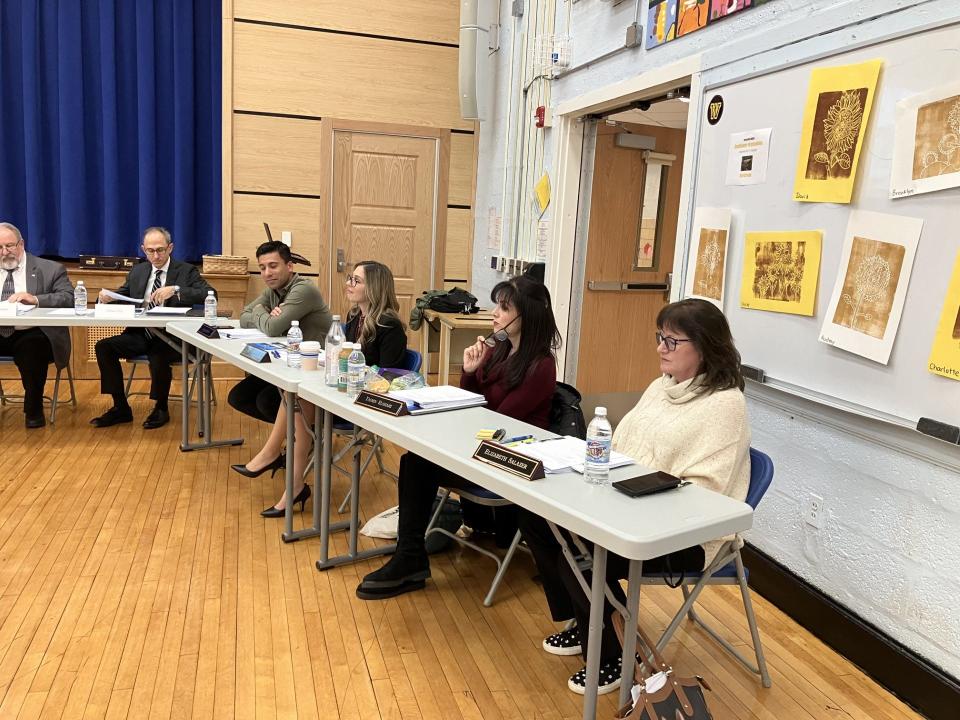Saddle River exploring future options for its middle school students
SADDLE RIVER — Should they stay or should they go? District officials are exploring whether to continue the middle school send-receive relationship with Ramsey.
The borough school board's long-range study concludes that it is "feasible" to end the relationship with Ramsey and that it "would not result in a substantial negative financial impact on either of the districts."
The $78,000 95-page study by consultants of the Porzio Bromberg & Newman law firm was unveiled in condensed form at a special Board of Education meeting.

The study will not affect the board's current negotiations for a new contract with Ramsey to receive its students in grades six through 12, which it has done for 25 years. Rather, the study is the first step in a long-term state-mandated process to consider ending the middle school part of the send-receive relationship. High school students would continue to have the unique option to attend Ramsey or Northern Highlands.
Several factors encouraged the study.
As indicated in the report, Saddle River is expecting an influx of students from at least two affordable housing complexes and must anticipate what, if any, changes are required in the district's one education building to accommodate them.
Of equal importance is whether the district can realistically take back its middle school students and more effectively and less expensively educate them in-house. Since 90% of Saddle River's high school students (99 pupils) leave Ramsey after middle school to attend Northern Highlands Regional High School in Allendale, the question remains whether Saddle River could and should more closely align its curriculum with those of the high school and its three other grade school districts,
Neither the report nor school officials are critical of Ramsey's performance. Standardized test scores reported in the study, taken during and after COVID, were somewhat higher for Saddle River students than Ramsey's. Consultants advised that variables such as in-class learning versus remote may have contributed to the differences.
Northern Highlands School Superintendent Scot Beckerman said in an email Friday that although there are "small differences" in its four participating districts' curriculum, "for the most part they attempt to keep their curriculum consistent so that when their students arrive at Northern Highlands in ninth grade, they are all prepared the same."
"Ramsey seems to be closely aligned enough for our Physics First approach, since they do Algebra 1 in eighth grade. For us, that is the most important connection," Beckerman said.
The chief difference is that Allendale, Ho-Ho-Kus and Upper Saddle River have formed the Quad Regional District with Northern Highlands to coordinate subjects and curriculums between grade school and high school, but it does not include Ramsey or Saddle River. It is not just what subjects are taught, but what books are used, how soon subjects such as foreign languages are introduced and how much time is devoted to them. Those decisions affect what is taught in elementary as well as middle school.

The Saddle River board had invited the three Highlands grade school districts to participate in the study, presumably to see if any wanted to take on its middle school students. All three declined for unstated reasons, the general consensus being that the three districts are facing space issues and did not want to make long-term commitments to another district. None responded to a request for comment.
Also in question is the impact on Saddle River's tax rate, the third-lowest in Bergen County due to its minimal municipal services, private wells and septic systems, no public library, and no fire hydrants until 10 years ago.
About 20 residents attended the meeting on Thursday, just before the holiday weekend, with 10 asking questions about costs. Mayor Albert Kurpis called the attendance "a very small representation of the community."
"There are people who will just want to focus on what's best for the children. Others will say, 'What's best for my taxes?'" Kurpis said. "I think we need to crowdsource this conversation and have more of a community-wide discussion before the board comes to a final decision."
Board President Emily Kaufman said the trustees had just received the report and needed more time to study its content.
However, a resident's question revealed that the district did not advise consultant architect Rodney Watkins that its middle school students were once housed in a separate building on campus that was since torn down. Watkins repeatedly said eight grades had previously been housed in the Wandell School building, and that only "scheduling" was required to make it work again, with some possible additions. It is unclear what special subject rooms were included in the separate building, such as science labs, library and art spaces, that might have to be re-created in Wandell.
Ramsey Board of Education President Laura Behrmann attended the meeting but did not comment. In an email after the meeting, Behrmann said: "We need to review the report and determine what we ultimately feel is in the best interests of the students before taking a position on this issue."
There was no vote or statement of plans for future meetings.
This article originally appeared on NorthJersey.com: Saddle River exploring future options for its middle school students

